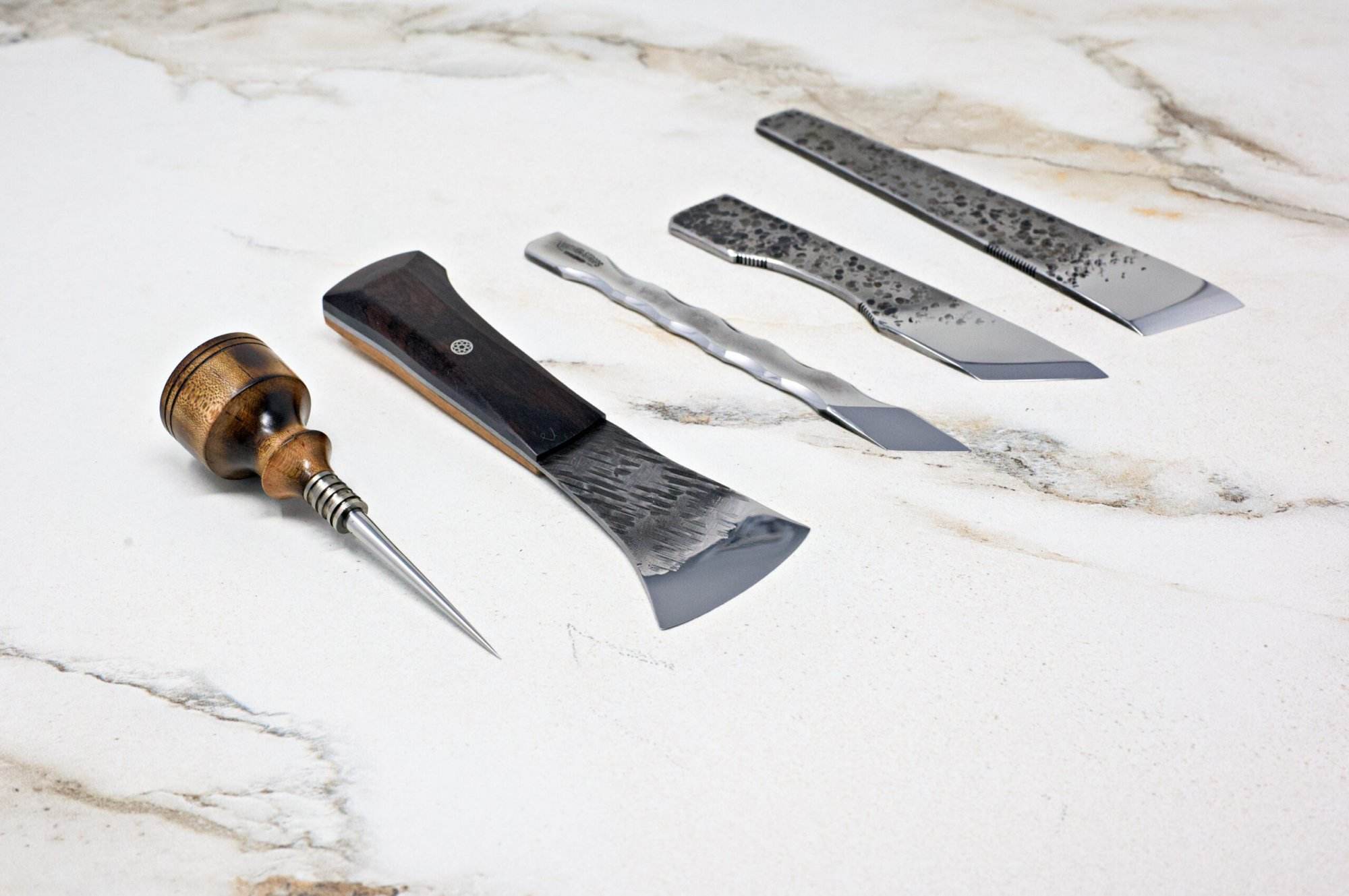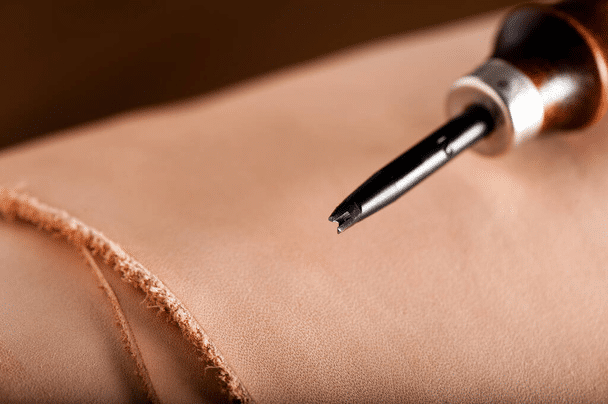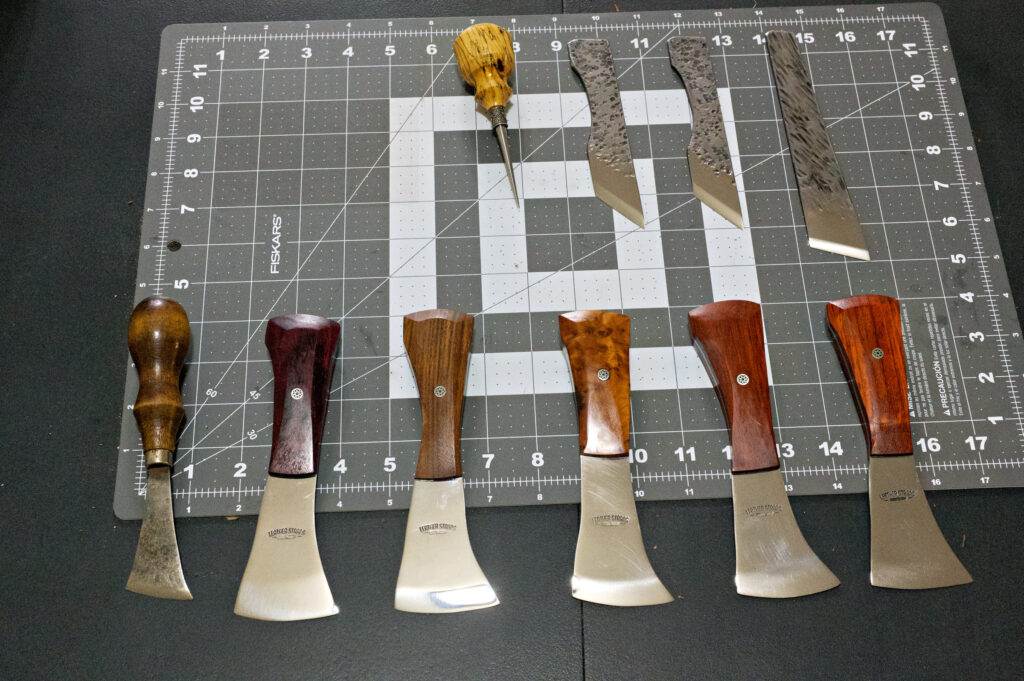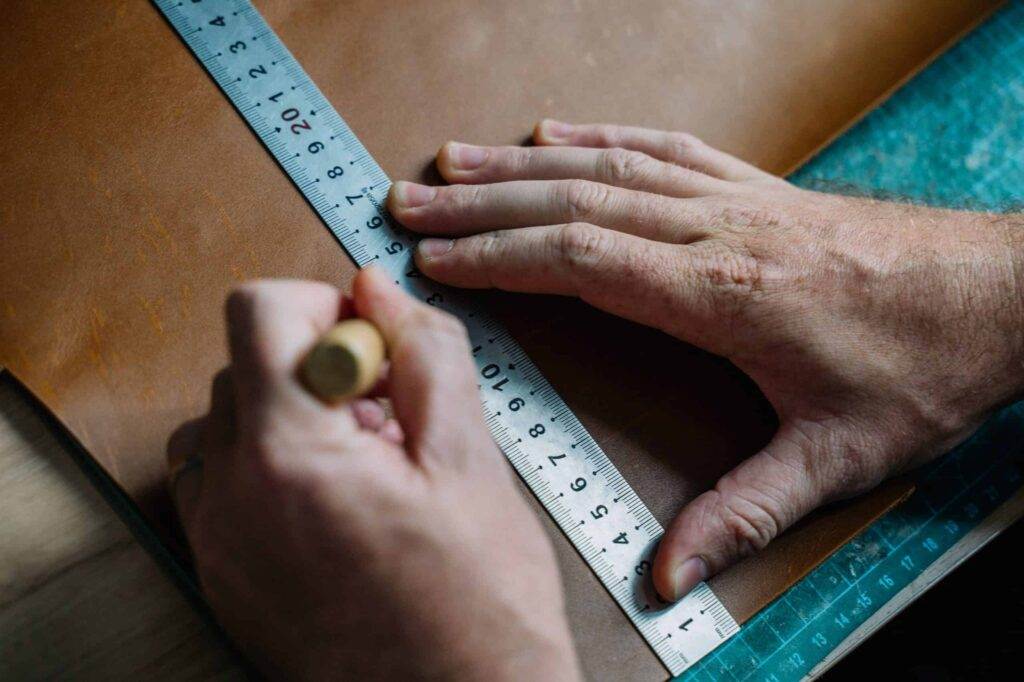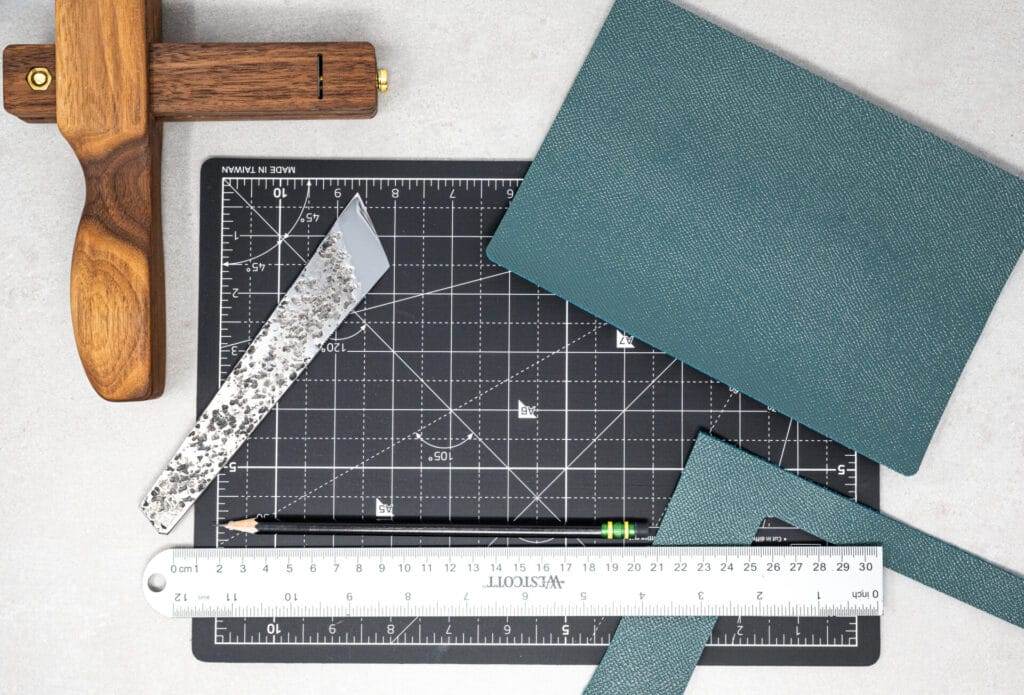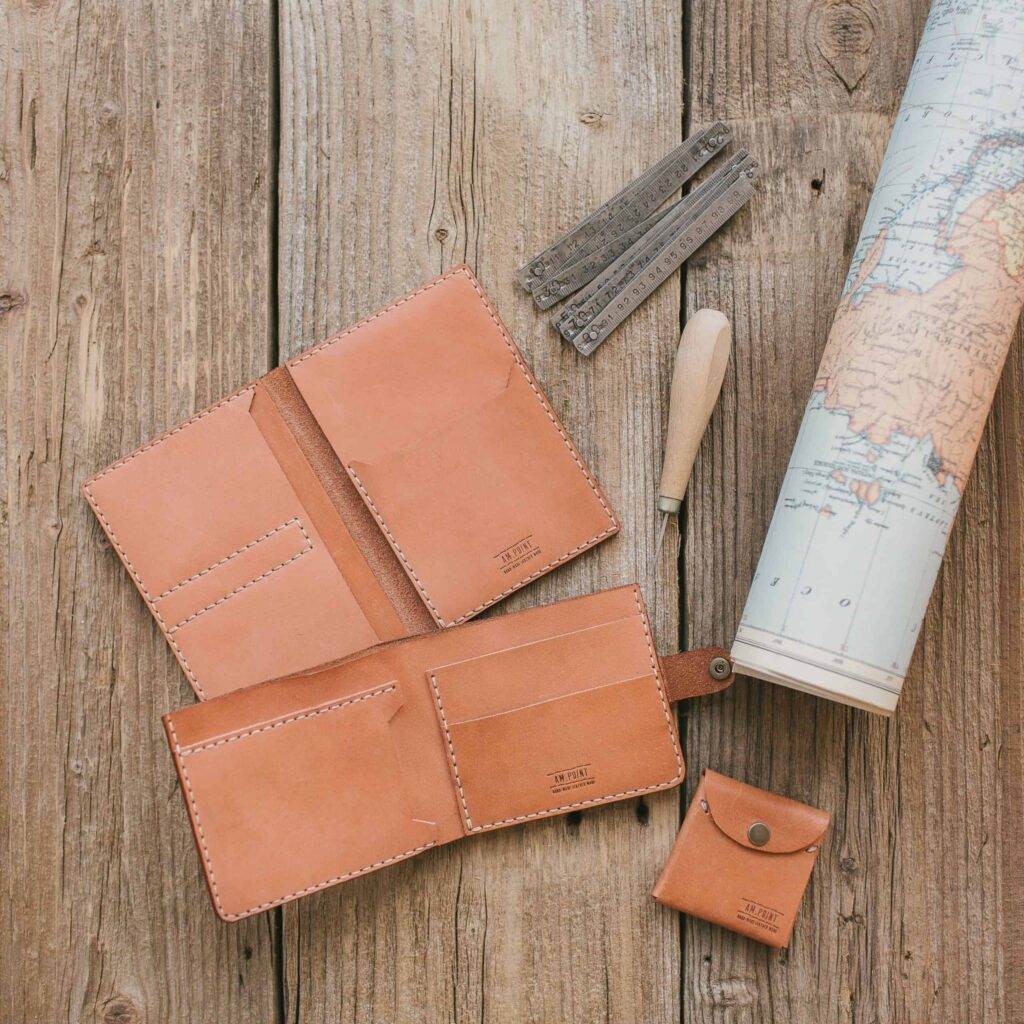Mastering the Art of Leathercraft Skiving
Skiving is a fundamental technique in leathercraft that involves thinning the edges of leather pieces to create a smoother transition between layers or to reduce bulk in seams. This process is essential for achieving a professional finish in various leather projects, from bags to wallets and belts. By skiving, artisans can ensure that their leather pieces fit together seamlessly, enhancing both the aesthetic appeal and functionality of the final product.
The importance of skiving cannot be overstated; it allows for more intricate designs and ensures that the leather behaves predictably during assembly. Moreover, skiving plays a crucial role in the durability of leather items. When edges are properly thinned, they are less likely to fray or wear out over time.
This technique also helps in creating stronger joints, as thinner edges can be glued or stitched more effectively. In essence, skiving not only elevates the visual quality of leathercraft but also contributes to the longevity of the items produced. For anyone serious about leatherworking, mastering skiving is a vital step toward achieving high-quality results.
Key Takeaways
- Skiving is a crucial technique in leathercraft for thinning and tapering leather edges, creating a professional finish.
- Choosing the right skiving tools, such as a sharp knife or specialized skiving tool, is essential for achieving clean and precise results.
- Mastering the skiving technique involves practicing consistent pressure and angle to achieve even thickness and smooth edges.
- Tips for achieving consistent skiving results include using a skiving guide, working with dampened leather, and practicing on scrap pieces before working on the final project.
- Common mistakes to avoid in skiving include using dull tools, skiving too aggressively, and not paying attention to the direction of the grain.
Choosing the Right Tools for Skiving
Selecting the appropriate tools for skiving is essential for achieving optimal results. The most common tool used for this purpose is a skiving knife, which features a sharp, angled blade designed specifically for thinning leather. When choosing a skiving knife, it is important to consider the blade’s width and angle, as these factors can significantly affect the ease and precision of the skiving process.
A well-balanced knife will provide better control, allowing artisans to make clean cuts without damaging the leather. In addition to skiving knives, other tools can enhance the skiving process. A rotary cutter or a utility knife can be useful for larger pieces of leather, while a straight edge or ruler can help maintain consistent thickness across the material.
Some leathercrafters also opt for specialized skiving machines, which automate the process and can save time on larger projects. Regardless of the tools chosen, ensuring they are sharp and well-maintained is crucial for achieving clean and precise skives.
Mastering the Technique of Skiving
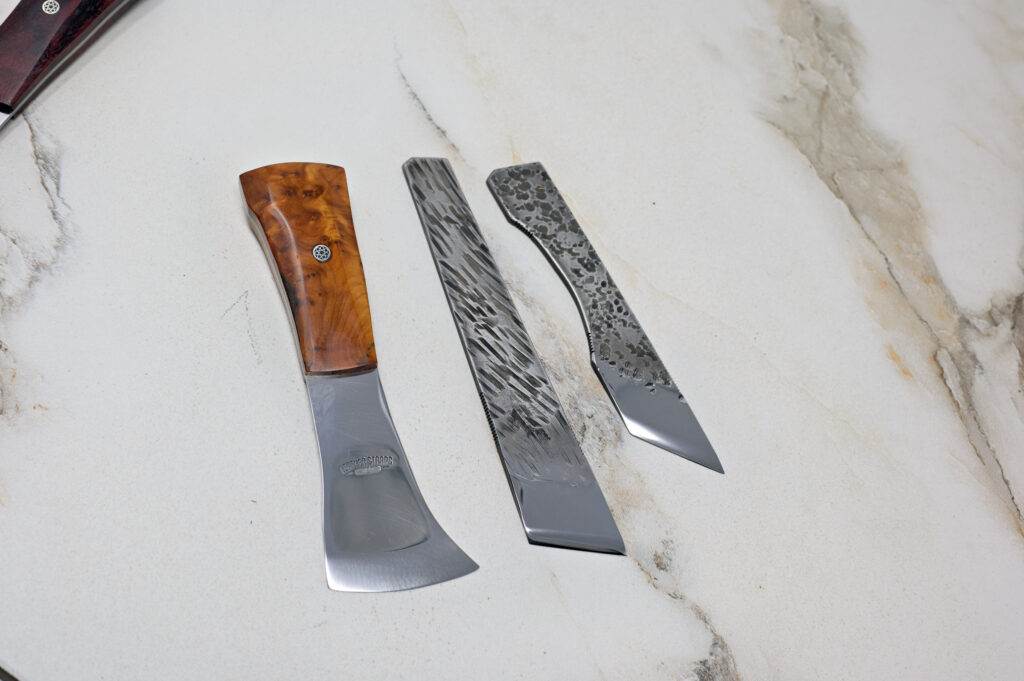
To master the technique of skiving, one must first understand the proper hand positioning and angle of approach. The artisan should hold the leather firmly while guiding the skiving knife at a consistent angle, typically between 30 to 45 degrees. This angle allows for effective thinning without cutting too deeply into the material.
It is advisable to practice on scrap pieces of leather before attempting to skive more valuable materials, as this will help develop muscle memory and improve control over the knife. Another important aspect of mastering skiving is understanding the type of leather being used. Different leathers have varying thicknesses and textures, which can affect how they respond to skiving.
For instance, softer leathers may require lighter pressure and a gentler touch, while stiffer leathers might need more force to achieve the desired results. By experimenting with different types of leather, artisans can gain insight into how each material behaves during skiving, ultimately leading to better outcomes in their projects.
Tips for Achieving Consistent Skiving Results
Achieving consistent results in skiving requires practice and attention to detail. One effective tip is to establish a consistent starting point for each skive. Marking a line on the leather where thinning will occur can serve as a guide, helping artisans maintain uniformity throughout their work.
Additionally, using a cutting mat or a dedicated work surface can provide stability and prevent slipping during the skiving process. Another helpful strategy is to work in small sections rather than attempting to skive large areas at once. By focusing on smaller portions of leather, artisans can maintain better control over their cuts and ensure that each section is thinned evenly.
It is also beneficial to regularly check the thickness of the leather as one works, using calipers or a ruler to measure progress. This practice not only helps in achieving consistency but also builds confidence in one’s skiving abilities.
Common Mistakes to Avoid in Skiving
While skiving is a valuable technique, there are several common mistakes that can hinder an artisan’s progress. One frequent error is applying too much pressure while cutting, which can lead to uneven edges or even damage to the leather itself. It is essential to find a balance between applying enough force to cut through the material while maintaining control over the knife’s movement.
Another mistake often made by beginners is neglecting to keep their tools sharp. Dull blades can cause tearing or jagged edges, resulting in an unprofessional finish. Regularly honing and sharpening tools will not only improve cutting efficiency but also enhance safety during the skiving process.
Additionally, failing to practice on scrap leather before working on final pieces can lead to frustration and wasted materials; taking the time to refine one’s skills on less valuable leather is always advisable.
Using Skiving to Enhance Leathercraft Projects
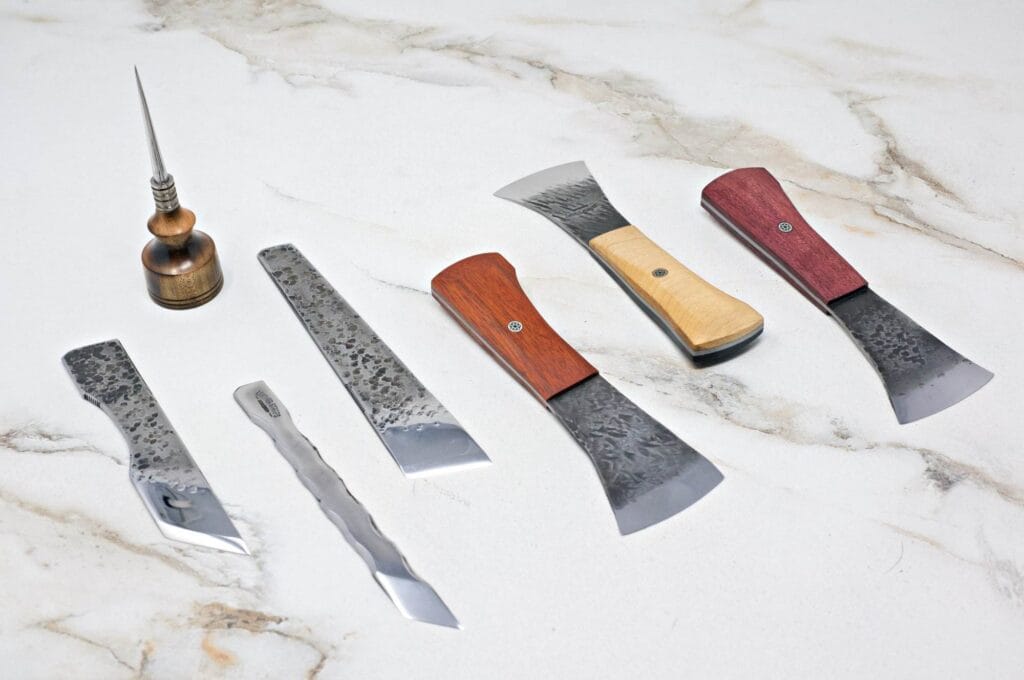
Skiving can significantly enhance various leathercraft projects by allowing for more intricate designs and cleaner finishes. For instance, when creating bags or wallets, skived edges can be folded over and stitched down without adding unnecessary bulk, resulting in a sleek appearance. This technique also enables artisans to create layered designs where different pieces of leather are joined together seamlessly, adding depth and interest to their work.
Furthermore, skiving can be used creatively to achieve unique textures and effects in leather projects. By varying the depth and angle of skives, artisans can create decorative patterns or gradients that add visual appeal. This versatility makes skiving an invaluable tool for those looking to push the boundaries of traditional leathercraft and explore new design possibilities.
Advanced Skiving Techniques for Experienced Leathercrafters
For experienced leathercrafters looking to elevate their skills further, advanced skiving techniques offer exciting opportunities for creativity and precision. One such technique involves using a beveler or edge tool after skiving to refine the edges further. This method not only enhances the appearance of the finished product but also ensures that edges are smooth and free from any rough spots.
Another advanced technique is known as “double skiving,” where both sides of a seam are thinned before being joined together. This approach allows for an even flatter seam that lies flush against the surface of the leather, creating a polished look that is particularly desirable in high-end projects. Mastering these advanced techniques requires practice and patience but can lead to stunning results that set an artisan’s work apart from others.
Troubleshooting Skiving Issues and How to Fix Them
Even seasoned leathercrafters may encounter issues during the skiving process that require troubleshooting. One common problem is uneven thickness after skiving, which can occur due to inconsistent pressure or angle during cutting. To address this issue, artisans should take time to assess their technique and make adjustments as needed.
Practicing on scrap pieces can help identify areas for improvement before working on final projects. Another issue that may arise is tearing or fraying at the edges after skiving. This problem often stems from using dull tools or applying excessive pressure while cutting.
To fix this, artisans should ensure their tools are sharp and well-maintained before starting any project. If tearing does occur, it may be possible to salvage the piece by carefully trimming away damaged areas or reinforcing them with additional stitching or adhesive. In conclusion, mastering skiving is an essential skill for anyone serious about leathercraft.
By understanding its importance, choosing the right tools, mastering techniques, avoiding common mistakes, and exploring advanced methods, artisans can significantly enhance their work’s quality and creativity. With practice and dedication, anyone can become proficient in this vital aspect of leathercrafting, leading to beautiful and durable creations that stand the test of time.
FAQs
What is leathercraft skiving?
Leathercraft skiving is the process of thinning or tapering the edges of leather to create a smooth and even surface. This technique is commonly used in leatherworking to reduce bulk and create seamless edges for various leather goods.
What tools are used for leathercraft skiving?
Common tools used for leathercraft skiving include a skiving knife, skiving machine, safety beveler, and a cutting mat. These tools are essential for accurately thinning the leather and achieving the desired results.
What are the benefits of mastering leathercraft skiving?
Mastering leathercraft skiving allows artisans to create professional-looking leather goods with seamless edges and reduced bulk. It also enables them to work with different types of leather and achieve precise and intricate designs in their projects.
Are there any tips for mastering leathercraft skiving?
Some tips for mastering leathercraft skiving include practicing on scrap leather, maintaining sharp skiving tools, and using a consistent and steady hand while skiving. It’s also important to pay attention to the direction and angle of the skiving knife for optimal results.
What are some common mistakes to avoid in leathercraft skiving?
Common mistakes to avoid in leathercraft skiving include uneven skiving, cutting too deeply into the leather, and using dull skiving tools. It’s also important to avoid rushing the skiving process, as this can lead to errors and imperfections in the finished product.

